mobile View, to the German Version tap the flag


- parliamentary Monarchy with the British monarch as Chief of State
• Flags
• Historical Flags
• Meaning/Origin of the Flag
• Coat of Arms
• Meaning/Origin of the Coat of Arms
• Map
• Numbers and Facts
• History
• Origin of the Country's Name
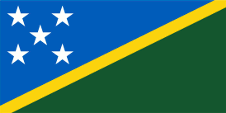
National and state flag,
ratio = 1:2,
Source, by: Wikipedia (EN), Flags of the World





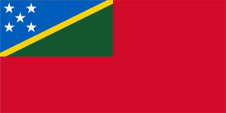
Merchant flag,
ratio = 1:2,
Source, by: Flags of the World



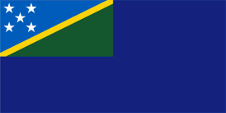
State flag at sea,
ratio = 1:2,
Source, by: Flags of the World



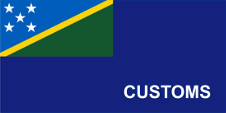
Customs flag,
ratio = 1:2,
Source, by: Flags of the World



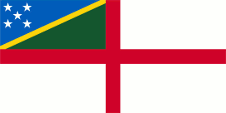
Naval flag,
used by police forces,
ratio = 1:2,
Source, by: Flags of the World



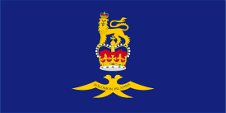
Flag of the Governor General,
ratio = 1:2,
Source, by: Flags of the World





1893–1977,
Union Flag → quasi national flag,
Flag of United Kingdom,
ratio = 1:2,
Source, by: Wikipedia (EN)





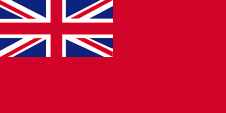
1893–1977,
Merchant flag,
ratio = 1:2,
Source, by: Flags of all Nations





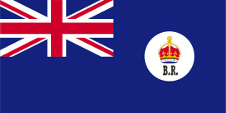
ca. 1902–1947,
Brit. Solomon Islands Protectorate,
Flag of the British Resident Commissioner,
ratio = 1:2,
Source, by: Flags of the World



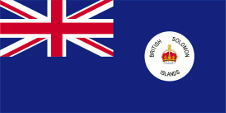
1906–1947,
Brit. Solomon Islands Protectorate,
Flag of the government (state flag),
ratio = 1:2,
Source, by: Flags of the World



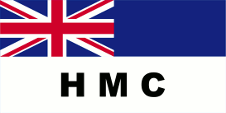
1907–1960,
Customs flag,
ratio = 1:2,
Source, by:
Flags of the World



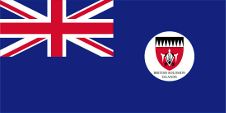
1947–1956,
Brit. Solomon Islands Protectorate,
Flag of the government (state flag),
ratio = 1:2,
Source, by: Flags of the World



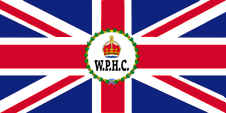
1905–1953,
Brit. Solomon Islands Protectorate,
Flag of Western Pacific High Commissioner,
ratio = 1:2,
Source, by: Flags of the World



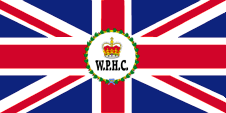
1953–1976,
Brit. Solomon Islands Protectorate,
Flag of Western Pacific High Commissioner,
ratio = 1:2,
Source, by: Flags of the World



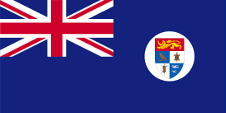
1956–1966,
Brit. Solomon Islands Protectorate,
Flag of the government (state flag),
ratio = 1:2,
Source, by: Flags of the World



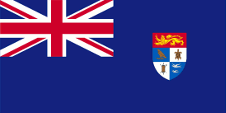
1966–1977,
Brit. Solomon Islands Protectorate,
Flag of the government (state flag),
ratio = 1:2,
Source, by: Wikipedia (EN), Flags of the World




The today’s flag of the Solomons was officially introduced on 18th of November in 1977, more then eight month before the independence. It shows an yellow diagonal stripe from left below to right above. It divides the flag in a blue upper and a green lower half. In the upper staff quadrant (in the blue field) five white five-pointed stars. The colour blue stands for the ocean, green for the country and its abundant vegetation and yellow stands for the sun. The five stars represent the pristine five districts of the country: Eastem, Western, Malaita, Central and Eastem Outer Islands. The colours of the flag do not seem to be exactly defined as shades. However, the Solomon Islands follow the British Ensign System and photos of the flag additionally suggest that the regulations of the British Ministry of Defence "Flags of all Nations" are observed here. Thus one would assume: Blue = Intermediate Blue = Pantone 300, Yellow = Deep Yellow = Pantone 116, Green = Tartan Green = Pantone 357, Dark Blue = Royal Blue = Pantone 280, Red = Pantone 186. The merchant flag of the Solomons is a so named "Red Ensign", with the national flag in the upper staff quadrant. The state flag of the Solomons is a so named "Blue Ensign", with the national flag in the upper staff quadrant. The naval flag of the Solomons is a so named "White Ensign", with the national flag in the upper staff quadrant and an uninterrupted red Cross of St. George. With this flag principle the Solomons are orientated in the British Ensign-System. This points to the former colonial connexions to United Kingdom. United Kingdom introduced a flag system in 1864 in which:
• war ships fly the "White Ensign" (naval flag), a white flag often with an uninterrupted red St. George's-Cross and with the Union Jack in the upper staff quadrant of the flag,
• merchant ships fly a "Red Ensign" (also named "Civil Ensign" → civil flag, the real merchant flag), a red flag with the Union Jack in the upper staff quadrant of the flag, and
• governmental ships fly the "Blue Ensign" (flag for the use by the gouvernment → the actual state flag), a blue flag with the Union Jack in the upper staff quadrant of the flag.
Since 1865 ships of colonial governments were permitted to fly the Blue Ensign with a badge in the flying end of the flag. The respective governments were asked to design appropriate badges. Merchant ships and seafaring persons from colonies were only permitted to use the Red Ensign with a badge, then also named Civil Ensign, if permission has been given to the respective colony by the British admiralty. The Solomons had in their colonial times no Red Ensign. Such a badge was often a regional landscape representation placed on a disk, often showing ships, historical events or even a kind of a logo. Very often, a badge also showed the name of the country or a motto. Some British possessions, however, already had a coat of arms from the beginning, or their badge was replaced by a coat of arms over the years. To ensure a uniform appearance in the flying end of the flags, coats of arms and other symbols were displayed on a white disk in the size of the earlier badges. There were also exceptions, because some colonies did not use the white disk and placed their escutcheon or even coat of arms directly on the bunting, sometimes enlarged. Already in the '40s they started to remove the white disk and placed the coat of arms directly or enlarged. This conversion process was done gradually, nowhere at the same time and completely. In some British possessions, flags with the white disc are still in use, in others no more and in some areas are both variants in use, next to each other. The first badge of the Solomons was introduced in the year 1906 and used within a white disk in the flying end of a British Blue Ensign (national flag). This badge showed a Tudor crown and a circular inscription: "British Solomon Islands". In the year 1947 was inroduced a new badge (coat of arms). It showed a red shield with a turtle and in the head of the shield black and white triangles. On the 24th of September in 1956 was introduced once more a new badge (coat of arms). It showed a blue and white quartered shield with a red head of the shield in which ws to see the British lion. In the quarters the symbolism of the then four districts of the islands: in the first quarter an eagle (Malaita), in the second a turtle (Western), in the third a shield with spears, bow and arrows (Central) and in the last quarter two white frigate birds (Eastern). Since 1966 the white disk – in which the badge hitherto was placed – was removed. The supreme deputy of the British crown was not a governor but a High Commissioner – the Western Pacific High Commissioner. He was assigned also for other colonies in that region and he resided on the Fiji Islands.
Source:
Flags of the World,
Die Welt der Flaggen,
Flaggen Enzyklopädie,
Wikipedia (EN)

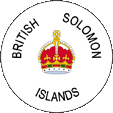
1906–1947,
Badge of the British Solomon Islands Protectorate,
Source, by:
Flags of the World,
Flaggenbuch 1939
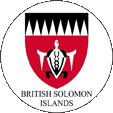
1947–1956,
Badge of the British Solomon Islands Protectorate,
Source, by:
Flags of the World
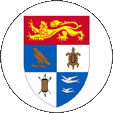
1956–1966,
Badge of the British Solomon Islands Protectorate,
Source, by:
Flags of the World

1966–1977,
Badge of the British Solomon Islands Protectorate,
Source, by:
Wikipedia (EN), Flags of the World
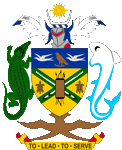
since 1978,
Coat of arms of the Solomon Islands,
Source, by:
Corel Draw 4

The coat of arms of the Solomons was adoped on the occasion of the independence on 7th of July in 1978. The colours of the coat of arms appear in the national flag too. It shows an yellow shield with a blue head of the shield. In it two frigate birds (Eastern District) and an eagle (Malaita). In the yellow field a green diagonal cross on which arrows are placed. To the left and on the right ever one turtle (Western District), in the middle a shield with bow, arrows and spears (Central District). As shield supporters serve a crocodile and a shark. Above a helmet, on it a boat of the natives and a rising sun. Below the shield a banner with the motto of the country: "To lead is to serve".
Source:
Flaggen Wappen Hymnen

Location:
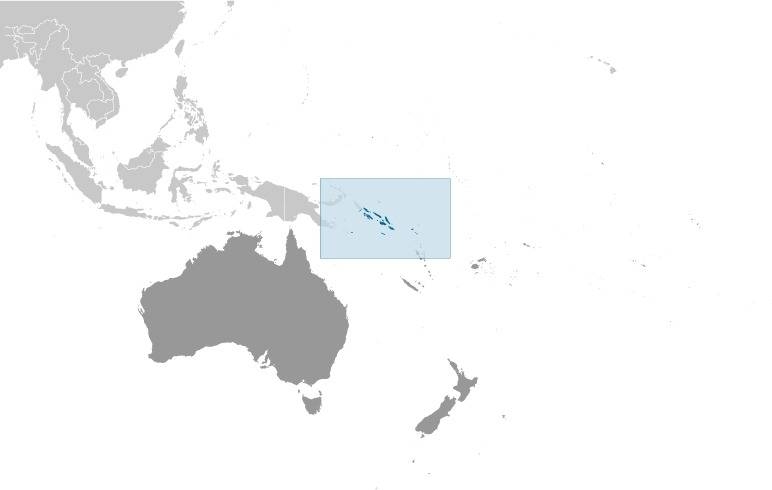
Source: CIA World Factbook
Map of the country:
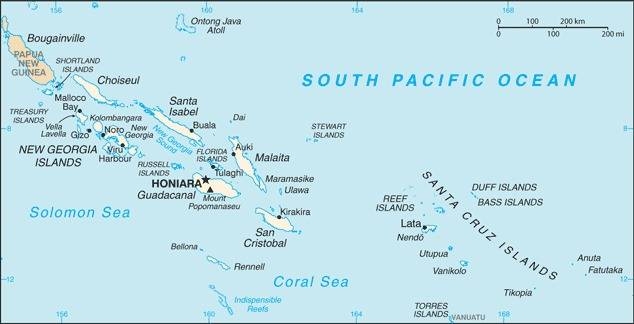
Source: CIA World Factbook

Area: 11.157 square miles
Inhabitants: 687.000 (2020), thereof 94% Melanesians, 3% Polynesians, 2% Mikronesians, Europeans, Chinese
Religions: 33% Anglican, 19% Roman Catholic, 45% other Christian, 2% other
Density of Population: 62 inh./sq.mi.
Capital: Honiara, 84.520 inh. (2017)
official Language: English
other Languages: Pidgin English, Melanesian, Polynesian
Currency: 1 Solomon Islands Dollar (SBD, SI$) = 100 Cents
Time Zone: GMT + 11 h
Source: Wikipedia (DE)

ca. 1000 B.C. · first settlement, coming from New Guinea
1568 · the Spanish seafarer Álvaro de Mendaña y Neyra discoveres the Solomons but they become wrongly registered in the nautical charts and it is not possible to find them again
1767 · the British seafarer Philip Carteret discoveres the Solomons again
1768 · the French seafarer and explorer Louis Antoine de Bougainville reaches the islands during his sailing journey round the world
1883 · United Kingdom occupies the southern Solomon Islands (New Georgia, Guadalcanal, Malaita, San Cristobal Islands)
1885 · the German Empire appropriates the Northern Solomon Islands (Buka, Bougainville, Choiseul, Santa Isabel, Ontong Java Islands)
1893 · United Kingdom establishes its protectorate over the Solomon Islands, the "British Solomon Islands Protectorate", the islands become a part of the British Western Pacific Territories and become subordinated the Western Pacific High Commissioner
1898 · United Kingdom annexes the Santa Cruz Islands, Bellona Islands and Rennell Island (Eastem Outer Islands)
1900 · the German Empire cedes the Northern Solomon Islands to United Kingdom (Choiseul, Santa Isabel, Shortland, Ontong Java Islands)
1942 · conquest by Japanese troops in the Second World War (Buka, Bougainville, Shortland, Choiseul, New Georgia, Santa Isabel, Russell Islands, Guadalcanal), some islands remain in the hands of United Kingdom (Rennell Islands, San Christobal, Malaita, Santa Cruz, Bellona Islands)
1943 · re-conquest by allied troops
5th of September 1945 · the last Japanese troops surrender
1960 · the Solomon Islands get an own administration
July 1971 · the Solomons get their own governor
28th of August 1973 · United Kingdom grants limited autonomy
22nd of June 1975 · the "British Solomon Islands Protectorate" become officially renamed in "Solomon Islands Protectorate"
2nd of January 1976 · United Kingdom grants full interior autonomy
7th of July 1978 · independence for the Solomons in the framework of the Commonwealth of Nations
1980 · first elections for a parliament
1988 · a commission recommends the transformation of the state in a federal republic as a result of quarrels between the particular islands and archipelagos of the Solomons
1992 · quarrels between the Solomons and Papua New Guinea
1998–2003 · attempted coup d’état, civil war
2003 · troops from Australia are called in to help and pacify the country
2017 · the Australian troops leave the country
November 2021 · after the diplomatic break of the country with Taiwan (Republic of China) announced by the country's government in 2019 and the establishment of diplomatic relations with the People's Republic of China, anti-Chinese unrest is shaking the country, troops from Australia and Fiji try to restore public order
Source:
Atlas zur Geschichte,
World Statesmen,
Wikipedia (EN),
Volker Preuß

The discoverer of the islands – the Spanish navigator Alvaro de Mendaña de Neyra – named the archipelago after the legendary Israeli King Solomon because he believed he had found the legendary gold islands of King Solomon and suspected large quantities of gold on them.
Source: Handbuch der geographischen Namen


![]()




















































